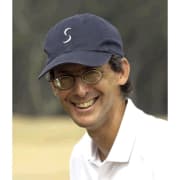U.S. Open Leaderboard Receives Gift With Overnight Rains

BROOKLINE, Mass. — Just when it looked like The Country Club in Brookline, Massachusetts, was drying out and speeding up to turn the U.S. Open’s final round into a survival test, the rains came overnight.
Players on Sunday’s traditional Father’s Day fourth round will face a completely transformed golf course thanks to .30-inch of rain, which abated earlier in the morning. That means all of a sudden somebody could go low.
Until now, the lowest round has been Canadian Adam Hadwin’s opening round 4-under-par 66. Now, anything is possible. With co-leaders Will Zalatoris and Matt Fitzpatrick sitting at 4-under par after three rounds, anybody among the top 16 (at 1 under) stands a chance of breaking through if they can just post a 65.
Until Sunday, the story around The Country Club has been one of a golf course gaining speed. All it took was for the wind to show up and the great players emerged. That’s the best way to describe Saturday’s third round action.
What looked at the outset Saturday as a strange leaderboard mix of the elites and the wannabes — the last three groups were Rory McIlroy and Aaron Wise, Jon Rahm and Hayden Buckley, and Collin Morikawa and Joel Dahmen — has now resolved itself into a more recognizable list of leading or promising young players: The leaderboard from the top to down now reads Zalatoris, Fitzpatrick, Rahm, Keegan Bradley, Hadwin, Scottie Scheffler, Sam Burns and McIlroy.
That sort of sifting out is a normal occurrence at U.S. Opens. This year, a big factor has been dramatically altered conditions of wind and weather that required players to adjust dramatically. And it wasn’t just the aerial game that caused, on occasion, havoc out there. It’s also the fact that the course has been drying out daily and firming up, making the ground game more conspicuous as an element that could not easily be controlled.
Consider how scores went up for those who made the 36-hole cut — not the normal progression, since presumably by the end of the second round the 60 percent of the field that was not scoring well have been weeded out. The field average of the first round was 72.681. Friday’s second round, played under milder conditions, saw average scores almost three-quarters of a shot lower — 71.994. But Saturday saw cooler temperatures, steady winds of 10-12 miles per hour and gusts up to 26 — thus scoring ballooned to 73.681.
The Country Club offers small greens with considerable contour, enveloped in every case by layers of rough in the form of a collar, intermediate cut, deeper cut and then primary, knee-high fescue and native grasses. The greens roll outward on the perimeter — the prime example being the 131-yard, par-3 11th hole, which is playing over par because the green peels off on the edge into a lot of awkwardness in the form of sand, rough or unsteady lies.
As the course dried out, the ground game exercised a powerful effect because the ball, once landing in short grass, would not readily come to a halt. Thus the frequency of balls hitting greens and ending up over the putting surface. The carefully layered rough also plays a factor, making it difficult to control the ball, depending upon the lie.
The fairways are generous by U.S. Open standards, measuring 30-35 yards wide. They are framed by a 5-foot-wide collar of light rough, mowed at 1 1/4 inches, then framed again by another layer of rough 8-feet wide and cut at about 2 1/2 inches. Outside of that the rough runs to 4 inches deep — enough to cover the golf ball and leave little choice but to muscle a shot out no more than 130-140 yards.
As the course dried out, more and more golf balls landing in the fairway were running out into the intermediate cut or even into that next layer. Combine that with firm greens and you have a recipe for a lower percentage of greens in regulation and the prospects of facing very dicey recovery. Putting for par — or a saving bogey — gets tiring in the last round.
It’s no surprise that all of the players atop the leaderboard are superb iron players. In that sense, The Country Club has done a very good job of identifying a certain classic level of play — certainly not the bomb-and-gouge variety.
At 7,284 yards, this is not a long course. While distance is always an advantage, keeping the ball in play is more important. What that means for Sunday is the likelihood that patient, careful and steady play will be rewarded and that those who take risks by shooting for marginal hole locations in the hope of forcing matters will not be successful.
All week long the talk at The Country Club had to do with a breakaway golf tour. It’s almost as if there was not any emotional space left for appreciating the genius of this golf course. But the attention has now shifted, from tour politics to course performance. We’re seeing what really holds up.
Sunday ought to be a day in which elite players hitting smart iron shots from the fairway will produce — if not a rush of adrenaline like the back nine of a Masters — a steady, satisfying feel of elite competition at its classiest. But the overnight rains and the more receptive fairways and greens present the possibility of a surprise, come-from-behind victory. A 65 might well be in the air.
